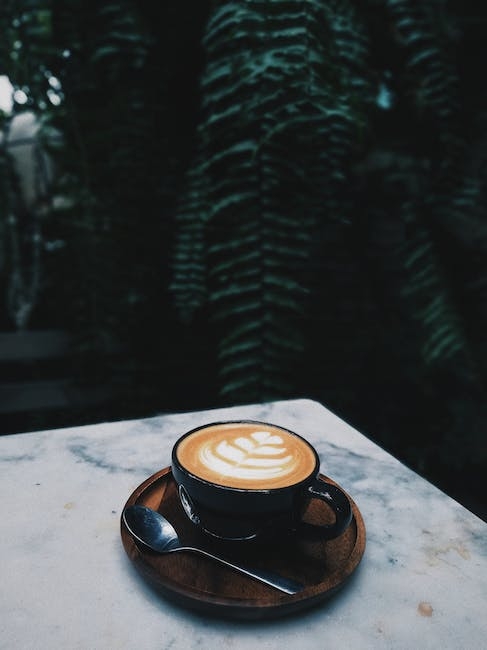Introduction to Chai Tea Latte
Chai tea latte, also known simply as chai latte, is a delightful and aromatic beverage that has gained popularity in recent years. It is a rich and creamy drink that combines the flavors of tea, milk, and a blend of warming spices.
Originating from India, chai tea latte has a long and storied history, dating back centuries. It was traditionally prepared as a spiced tea infused with a mixture of herbs and spices, and then sweetened with honey or sugar. Today, chai tea latte has become a beloved favorite in cafes and coffee shops around the world.
In this article, we will delve into the history of chai tea latte, explore the traditional ingredients used in its preparation, discuss its popularity in Western culture, and discover the various variations that exist for this beloved beverage.
History of Chai Tea Latte
The history of chai tea latte dates back to ancient times in India. The word “chai” is actually derived from the Hindi word for tea, which itself originated from the Chinese word “chá.” Tea was first introduced to India by the British in the 17th century, but it quickly became a popular beverage among the Indian population.
However, it wasn’t until the 1830s that the concept of chai as we know it today really took off. During this period, the British-owned Indian Tea Association began promoting tea consumption in India. To make tea more appealing to the local Indian population, they started adding traditional Indian spices and herbs to the brew.
The traditional ingredients used in chai tea latte include black tea leaves, milk, and a blend of spices. The spices commonly used in chai include cinnamon, cardamom, ginger, cloves, and black pepper. These spices not only add a warm and complex flavor to the beverage but also offer various health benefits.
Chai became a popular drink among Indian households, with each family having their own unique recipe handed down through generations. It was often served to guests as a symbol of hospitality and was an integral part of social gatherings.
In the late 20th century, chai tea began to gain popularity beyond India’s borders. Travelers and expatriates who had experienced the unique flavors of Indian chai introduced it to the Western world, where it quickly became a hit. Today, chai tea latte can be found in cafes, coffee shops, and even as a premixed powder or concentrate, making it accessible to tea lovers all around the globe.
Traditional Ingredients in Chai Tea Latte
The traditional ingredients used in chai tea latte play a crucial role in creating its distinctive flavors and aromatic profile. While there may be variations in the specific spices and ratios used, the core ingredients remain consistent.
Black Tea: The base of chai tea latte is typically black tea, which adds a robust and bold flavor to the beverage. Assam tea, Ceylon tea, and Darjeeling tea are often used for their deep and malty notes.
Milk: Chai tea latte is known for its creamy and velvety texture, which is achieved by incorporating milk into the brew. The type of milk used can vary depending on personal preference, with options including whole milk, almond milk, soy milk, or even coconut milk for a dairy-free alternative.
Spices: The hallmark of chai tea latte is its medley of spices. The most common spices used include:
- Cinnamon: Adds a warm and sweet flavor to the tea.
- Cardamom: Provides a slightly floral and citrusy note.
- Ginger: Offers a spicy and invigorating kick.
- Cloves: Contributes a pungent and aromatic element.
- Black Pepper: Adds a subtle hint of heat.
These spices are typically ground or crushed and added to the tea during preparation. Some recipes may also include additional spices such as nutmeg, fennel seeds, or star anise to further enhance the complexity of flavors.
Sweetener: To balance out the boldness of the tea and spices, chai tea latte is often sweetened with honey, sugar, or other sweeteners like maple syrup or agave nectar. The amount of sweetener used can be adjusted according to personal taste preferences.

Traditional preparation of chai tea latte involves simmering the ingredients together to allow the flavors to meld and infuse into the liquid. The resulting beverage boasts an enticing aroma, a delightful balance of spiciness and sweetness, and a comforting texture.
While traditional ingredients form the foundation of chai tea latte, there are also numerous variations and adaptations of this beloved beverage, which we will explore in the next section.
Chai Tea Latte’s Popularity in Western Culture
Over the past few decades, chai tea latte has seen a surge in popularity in Western culture. This can be attributed to several factors, including its unique flavor profile, its association with mindfulness and relaxation, and its versatility as a customizable beverage.
One of the reasons for chai tea latte’s appeal in the Western world is its distinct and complex flavor. The combination of robust black tea, warming spices, and creamy milk creates a drink that is both comforting and invigorating. The aromatic spices like cinnamon and cardamom tantalize the senses and offer a sensory experience that is distinct from other traditional teas or coffee-based beverages.
Moreover, chai tea latte is often associated with mindfulness and relaxation. The process of preparing and enjoying a cup of chai can be a calming ritual, allowing individuals to slow down and savor the moment. It has become a popular choice for those seeking a soothing and comforting beverage to unwind after a long day.
The versatility of chai tea latte is another reason for its widespread popularity. Many cafes and coffee shops offer variations of chai, allowing customers to customize their drink according to their preferences. Some may prefer it with a stronger tea flavor, while others may opt for extra spices or a different type of milk. This adaptability has made chai tea latte accessible to a wide range of taste preferences and dietary restrictions.
Chai tea latte has also found its way into popular culture, with mentions and appearances in TV shows, movies, and literature. This exposure has further contributed to its rising popularity and has helped to establish it as a beloved beverage choice among individuals of all ages.
In conclusion, the popularity of chai tea latte in Western culture can be attributed to its unique flavor profile, its association with relaxation, and its versatility as a customizable beverage. Whether enjoyed for its aromatic spices, its comforting qualities, or its adaptability, chai tea latte has undoubtedly earned a special place in the hearts and cups of tea lovers around the world.
Variations of Chai Tea Latte
While the traditional preparation of chai tea latte is beloved by many, there are also numerous variations and adaptations of this delightful beverage. These variations often incorporate additional flavors or ingredients to create unique and exciting twists on the classic recipe.
One popular variation is the addition of vanilla. The subtle and sweet notes of vanilla complement the spices in chai tea latte, adding another layer of complexity to the flavor profile. Vanilla can be added in the form of extract, syrup, or even a vanilla bean steeped in the tea to infuse the drink with its aromatic essence.
For those who enjoy a bit of indulgence, a common variation is the incorporation of chocolate. This results in a rich and decadent drink known as a “chai mocha.” Chocolate can be added in the form of cocoa powder, melted chocolate, or chocolate syrup. The combination of the warming spices, creamy milk, and the indulgent taste of chocolate creates a truly heavenly treat.
Another popular variation of chai tea latte is the addition of a flavored syrup or syrup blend. Syrups such as caramel, hazelnut, or almond can be added to impart a subtle yet distinct flavor to the drink. These flavored syrups add a touch of sweetness and depth, complementing the spices and creating a delightful twist on the classic chai.
Some individuals may prefer a caffeine-free option, and herbal variations of chai tea latte provide a great alternative. Instead of using black tea as the base, herbal infusions such as rooibos or chamomile can be used. These herbal blends still incorporate the warming spices and can be enjoyed with milk and sweetener for a caffeine-free chai experience.
Additionally, chai tea latte can be served hot or iced, depending on personal preference and the weather. Iced chai tea latte is especially popular during warmer months, offering a refreshing and cooling twist on the classic warm beverage.
It’s worth noting that these variations are just a few examples among many. With the growing popularity of chai tea latte, creative twists and adaptations are continually emerging, showcasing the versatility and endless possibilities of this beloved beverage.
Whether enjoyed in its traditional form or as a unique variation, chai tea latte continues to captivate tea lovers with its inviting aroma, warmth, and harmonious combination of flavors. So, why not indulge in a cup of chai tea latte and explore the world of possibilities it offers?


Leave a Reply